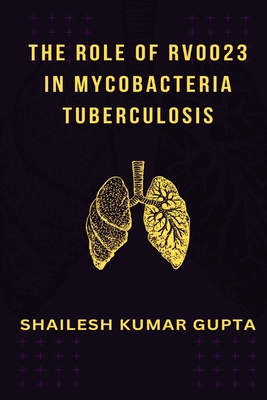You are here
Back to topThe role of Rv0023 in mycobacteria tuberculosis (Paperback)
Description
Tuberculosis (TB) remains a major cause of death worldwide and the leading
cause by a single infectious agent. The causative agent of
tuberculosis is Mycobacterium tuberculosis, an acid fast, non-motile, rod
shaped bacterium. The term "tuberculosis" was coined by Johann Schonlein in
1834 and Robert Koch discovered Mycobacterium tuberculosis as the causative
agent for tuberculosis in 1882. Though it was discovered in
1882, many historical evidences have estimated that the bacterium has been
present in earlier human civilizations dating back to 9000 years. Tuberculosis is
an infectious disease and is spread when an infected person coughs spreading
the bacteria in the air. The lungs are the primary target of the disease
(pulmonary TB) but it can also affect other sites such as bones, lymph nodes,
abdomen and skin (extrapulmonary TB).
Although tuberculosis occurs in every part of the world, eight countries accounted for most of the new TB cases: India,
China, Indonesia, Philippines, Pakistan, Nigeria, Bangladesh and South Africa.
The Sustainable Development Goals (SDGs) and WHO's End TB Strategy targets
to end TB epidemic by 2030 and all the United Nation member states are
committed to the cause and working closely with WHO.
The Mycobacterium tuberculosis complex (MTC) comprises of M. tuberculosis,
M. bovis, M. africanum, M. microti, M. canettii, M. caprae, and M. pinnipedii,
M. bovis and is present in a wide variety of domestic and wild animals. M.
africanum and M. canettii causes tuberculosis in humans in certain parts of
Africa. M. microti causes tuberculosis in voles, while M. caprae, and M.
pinnipedii affects mammals. All the organisms in the MTC show a great level of
similarity of more than 99% in their DNA sequences and genetic analysis of the
MTC has identified M. canettii as the ancestral strain. Despite having a high similarity, the presence of SNPs helps in discriminating between the members of the MTC.
To be a highly successful pathogen Mycobacteria has to evolve various strategies
to confront the host defence mechanisms. Most importantly its success depends
on its ability to replicate inside the macrophages, the primary host cell, and also
that the macrophages remain viable. Despite the fact that macrophages are very
effective in internalizing and clearing most of the bacteria, mycobacteria have
devised several ways to overcome these challenges.
